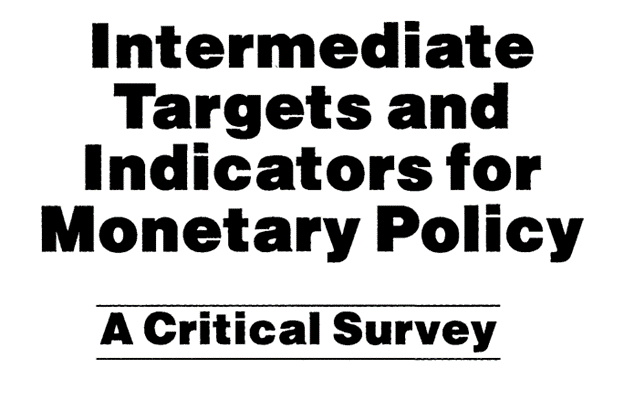Authors: A.Estrella and G.HARDOUVELIS
Publication: Intermediate Targets and Indicators for Monetary Policy: A Critical Survey, Federal Reserve Bank of New York, 1991, pg. 339-362.
Introduction:
In many macroeconomic models, and sometimes in discussions of monetary policy, economists refer to the interest rate, as if there were only one fixed income asset in the economy. This
simplification is often adequate. However, when the intention is to investigate in detail the mechanisms through which monetary policy operates, it is necessary to examine a wider array of fixed income securities with various terms to maturity. In the economic literature, most studies of the term structure of interest rates are designed to test whether the “expectations hypothesis” holds. That is, they ask whether long-term rates are weighted averages of expected short-term rates, possibly with an adjustment for various types of risks.
By contrast, how monetary policy affects or might make use of the term structure is a question that is rarely addressed directly. The yield curve has long been known to have important connections with the monetary policy process, although explicit formulations of these connections, either in a policy or a research context, are extremely rare. Recently, however, a member of the Federal Reserve Board of Governors affirmed that the yield curve is one of three major indicators that may be useful in formulating monetary policy.1
The purpose of this paper is to examine how and where the yield curve fits in the framework of monetary policy. We ask: Can the yield curve serve as a policy target or indicator? Can the yield
curve be used in a routine or even mechanical way in the conduct of policy? The yield curve could conceivably play various roles—as a final target, an intermediate target, or an economic indicator. A final target of monetary policy, the ultimate object of influence for the monetary authority, is a variable that describes aggregate economic performance. Natural candidates
are real GNP, inflation, or perhaps a combination of the two. The slope of the yield curve cannot be a final target, however, because it has no direct link to aggregate economic welfare. Nevertheless, the yield curve could potentially serve as an intermediate target. An intermediate target is a variable that is related to the final target in a stable, predictable, and causal way, and that can be readily controlled by policy makers.
For the yield curve to serve as a macroeconomic indicator, and hence to provide monetary authorities with information that will guide their decisions, the requirements are less stringent. It
suffices that the yield curve can predict future macroeconomic developments without necessarily causing them. This paper is organized into two major sections. Section I examines the relationship between a direct instrument of monetary policy, the federal funds rate, and the slope of the yield curve. The empirical evidence suggests that the federal funds rate does have a partially predictable negative effect on the slope of the yield curve. However, the effect varies over time, suggesting that the Federal Reserve can influence-but not control-the slope of the yield curve.
Section II focuses on the relationship between the slope of the yield curve and two important final policy targets: real GNP growth and inflation. The evidence shows that the slope of the yield curve is positively associated with future changes in output and inflation. Furthermore, this positive association is not attributable to the negative effect that restrictive monetary policy can have on both the contemporaneous slope of the yield curve and on future changes in real output and inflation. A safe interpretation of the evidence is that the yield curve is a useful addition to the tool kit of policy makers and others as they try to assess future exogenous macroeconomic developments.
Download Possible Roles of the Yield Curve in the Monetary Policy pdf


